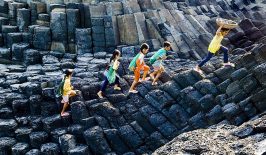An interactive website allows users to calculate their slavery footprint based on their lifestyle and consumption habits. The slavery footprint is an inconvenient truth but an important one that can motivate us to make more mindful choices as consumers.
Though it is easy to look at slavery as a mistake of the past, it is still happening right now, in many parts of the world, even if we cannot see it directly. Our choices as consumers influence the fates of millions of people, for better or – in the case of slavery – for worse.
Slavery is when someone is deceived or coerced into a situation they didn’t agree to for someone else’s profit. Victims are forced to work under the threat of violence for little or no pay. They are prevented from walking away. Today over 29 million people live under these conditions.
It is easy to “see no evil” when the slavery that allows our way of life happens in distant countries such as the Democratic Republic of Congo, Pakistan or India. But a website could help remind us that we are very much part of this broken system. Made in a Free World designed Slavery Footprint, an interactive tool allowing users to calculate the number of slaves that work for them.
The user is invited to navigate 11 different steps. In each step, they are prompted to provide details about their lifestyle. The first steps begin with basic information (location, age, children) and the questions then focus on consumption habits: size of your house/apartment, dietary choices, jewellery, electronics, etc.

During some of the steps, the website provides some rather sobering facts about slavery and its links to our daily products. For instance, tens of thousands of Indian children are forced to mine mica, a mineral used in make-up to create a sparkly effect. The shrimp industry in Southeast Asia has also been linked to slavery, with workers being forced to peel shrimp for 20 hours a day to satisfy our seafood cravings.

After clicking my way through the 11 steps, I discovered that 44 slaves work for me, which is a hard pill to swallow. Unfortunately there was no additional information provided with this number, and I was asked to submit my e-mail address to receive a detailed breakdown of my footprint. I did, and a day later I have still not received anything.
While I found the exercise extremely interesting, I think the fact that a number was given at the end without an explanation makes the calculation lose some of its credibility. The breakdown of the footprint should be provided right away, without having to give an e-mail address, to maximise the educational effect of the website.
Nonetheless, I still think it is an interesting website and that more people should put their lifestyle to the test. And after seeing how many slaves work for them, the next step would be to try to change that. In this case, Made in a Free World provides plenty of information on their initiatives to divest from slavery.






